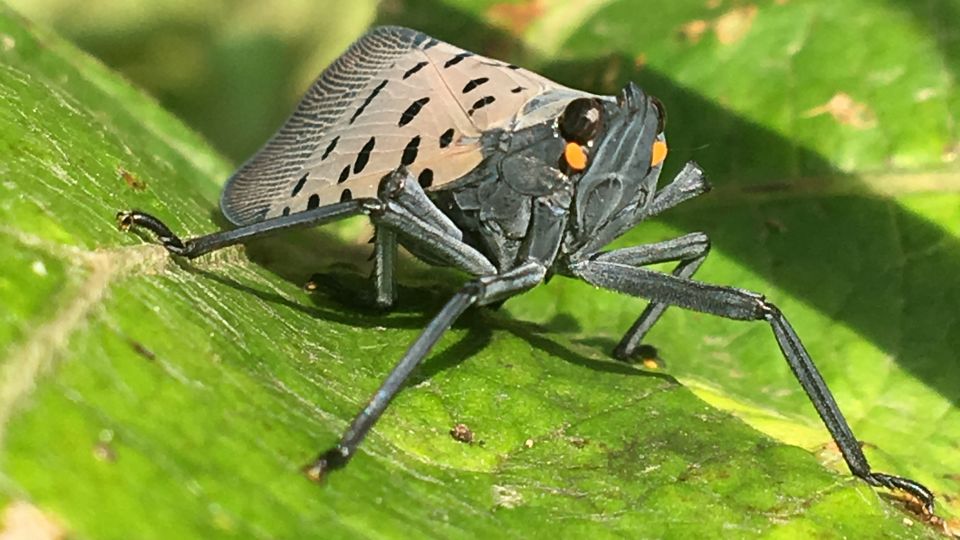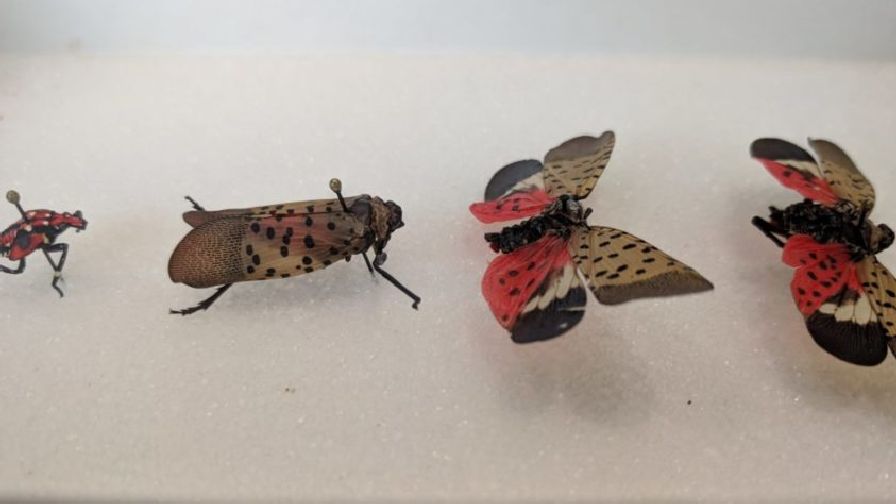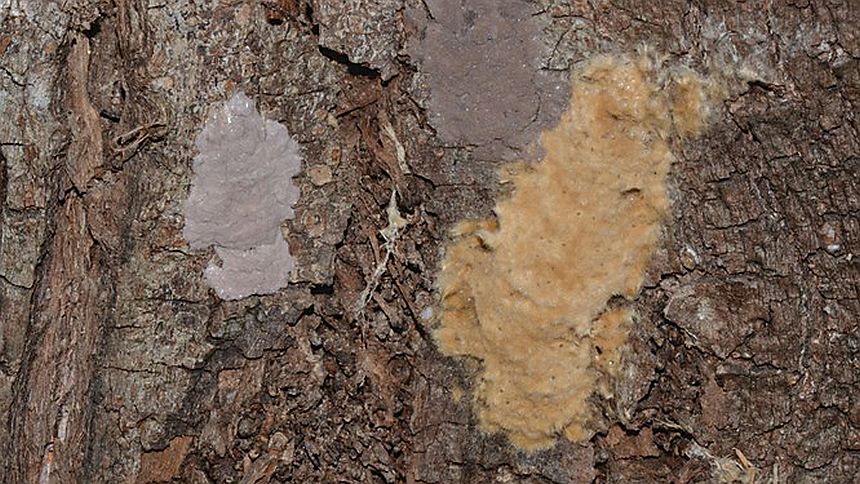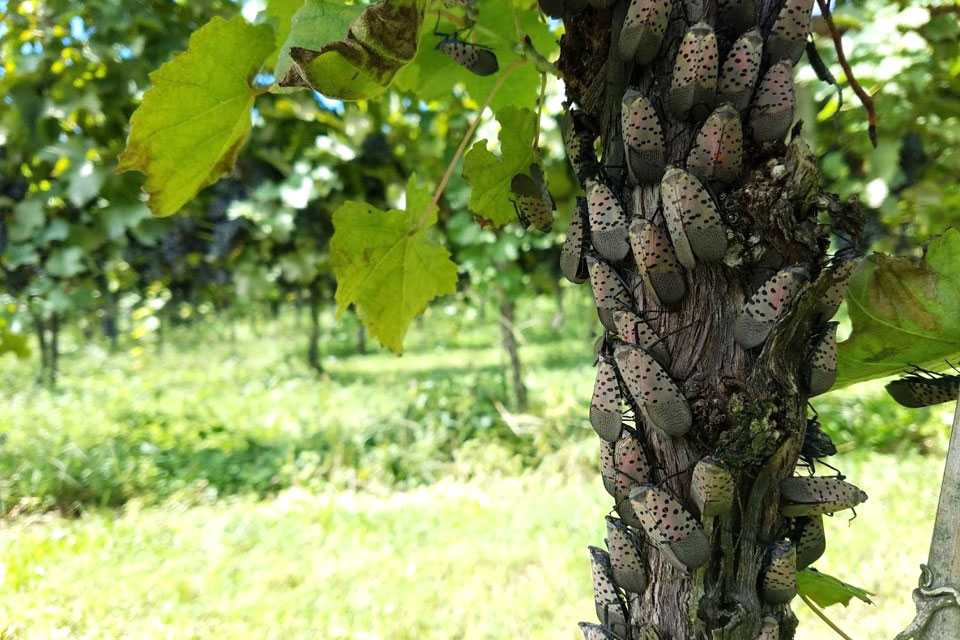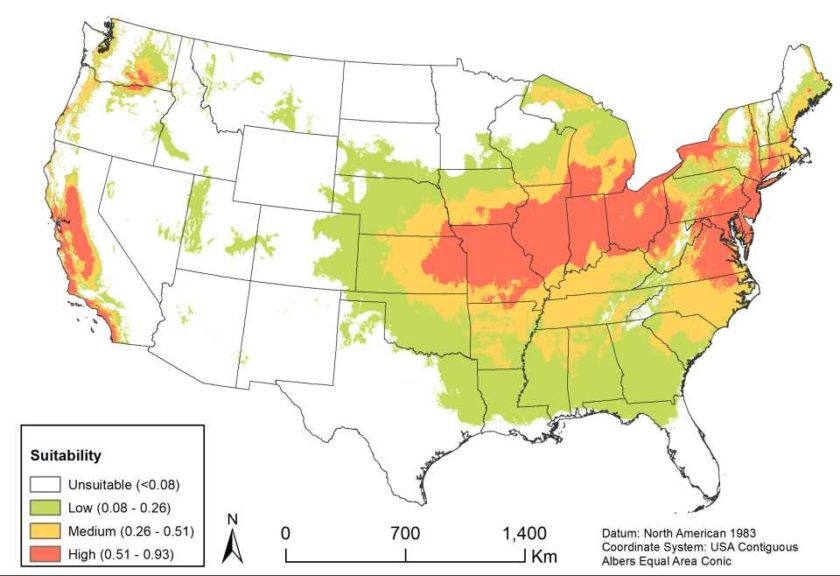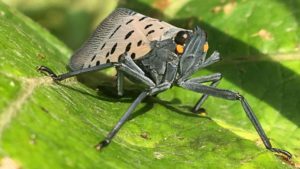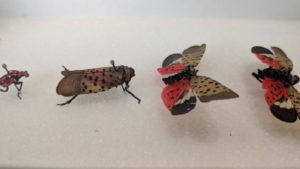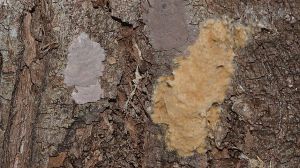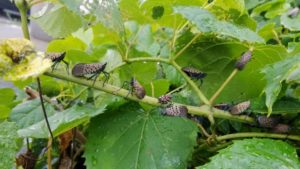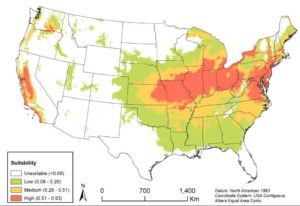What’s Being Done To Stop Invasion of the Spotted Lanternfly
What is New York doing to fight the spread of spotted lanternfly (SLF)? The state’s Invasive Species Coordinator, Thomas Allgaier, offered several solutions during an October webinar presented by Finger Lakes PRISM (Partnership for Regional Invasive Species Management):
Traps: Two types are used — plastic containers, which are more durable and have larger capacities, and plastic bags. The traps are monitored at least every two weeks. Insects crawl up the netting, get pulled into a choke point, and cannot exit. Containers are then emptied; bags are replaced.
Visual Surveys: Locations examined include warehouses, trailheads and recreation parking, truck stops and rest areas (particularly in the Hudson Valley area), and transportation hubs and corridors. Event locations are also a concern. “Events, like bloom festivals, race car events, concerts, and any large gatherings where people come in from other areas, can possibly bring in spotted lanternfly from Pennsylvania, New Jersey, or other parts of New York,” Allgaier said. Finally, horticulture inspectors are always checking their nurseries. “There’s a whole list of things we inspect for,” Allgaier said.
Detector Dogs: The Lower Hudson PRISM utilizes two SLF detector dogs — Fagen and Dia — that are owned and managed by the New York-New Jersey Trail Conference. “Quite the cute dogs and very, very talented,” Allgaier said. “They have detected insects on trucks — thankfully dead insects — that our horticulture experts did miss. They’ve been a huge help.”
Outreach: “Wanted” posters have been a great marketing tool, Allgaier said. Literature and swag, such as wine coasters and hats, have been distributed at events, such as the state fair. “Temporary tattoos for kids don’t really have a lot of information, but they get people talking, as do the hats,” Allgaier said. “I’m often asked about the butterfly on my hat. And it starts a good conversation – ‘Well, it’s not actually a butterfly. It’s a plant hopper, and if you see this, please stomp it.’”
Treatments: Contractors and PRISM partners — some on a volunteer basis — have spent time applying insecticides. Site preparation has required permission to access from municipal and private property owners.
SLF Permit Training: The Pennsylvania Dept. of Agriculture requires businesses operating in the state’s SLF quarantine zones to have permits to move equipment and goods within and out of the zones. Although not mandated, the free two-hour course is recommended by Allgaier for New York businesses. “It goes into great detail how you can prevent accidental hitchhikers,” he said.
Civic Duty: New Yorkers who see a SLF should kill the insect immediately and report it to the state’s Dept. of Agriculture and Markets. In addition, the state has launched the iMapInvasives initiative, which invites volunteers to sign up to survey a specific area or grid.
“We had more than 375 people sign up for this webinar, which shows that people are very interested,” Hilary Mosher, Finger Lakes PRISM Program Coordinator, said. “And New York State’s response to SLF is phenomenal. We are trying to stay ahead of the curve.”





